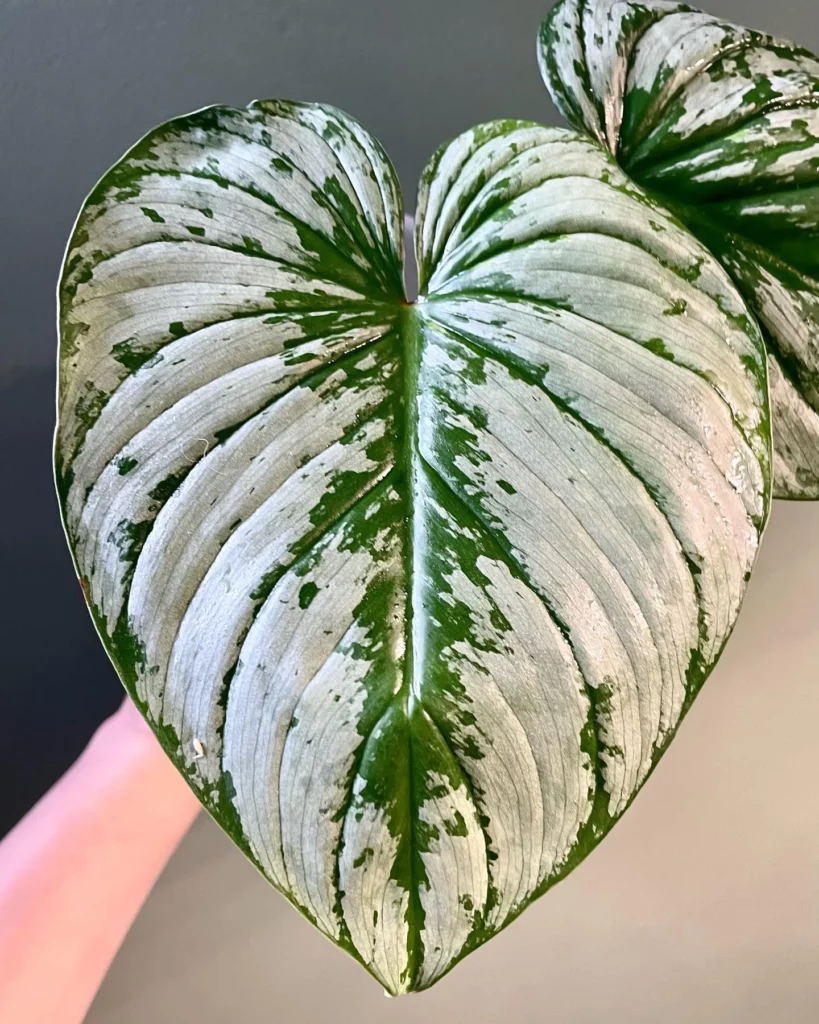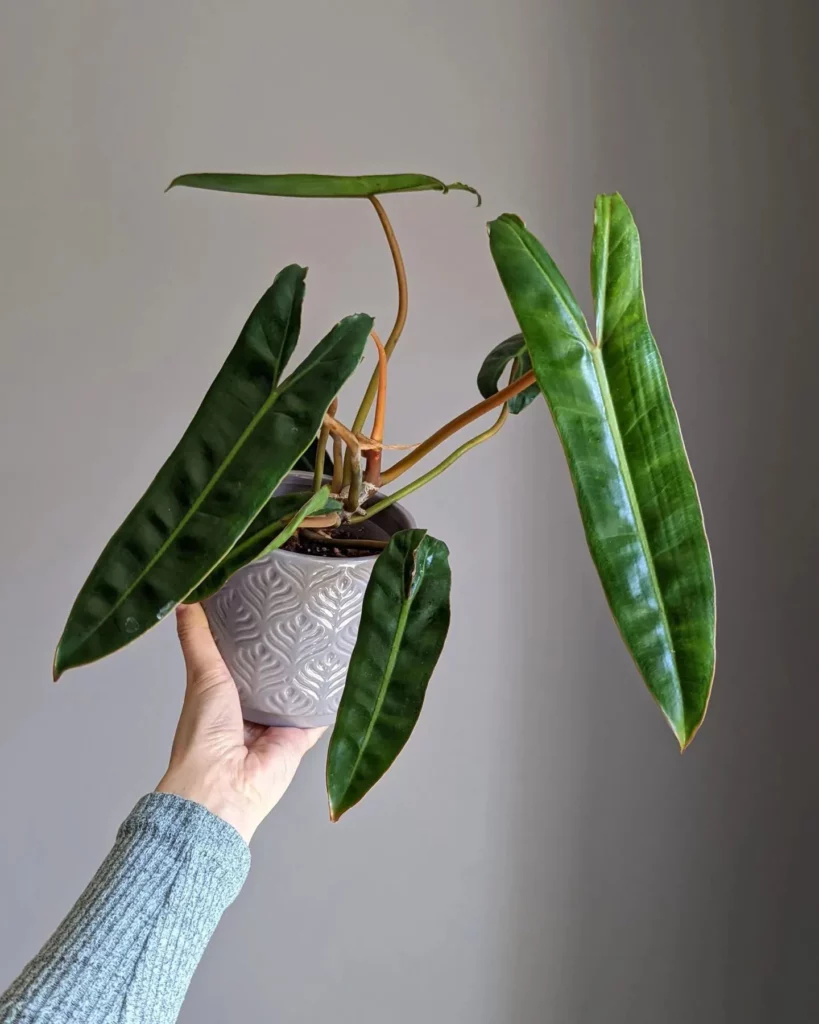Welcome to our comprehensive care guide for the Philodendron Spiritus Sancti. This extraordinary plant, native to a small region in Brazil, is highly sought after for its unique appearance and requires specific care to thrive in your home. Whether you’re a seasoned plant parent or a beginner, this guide will provide you with expert tips to ensure the health and vitality of your Spiritus Sancti.
Key Takeaways:
- Philodendron Spiritus Sancti is a rare and coveted plant native to Brazil.
- It has elongated, sword-like leaves that can reach up to 2 feet in length.
- The Philodendron Spiritus Sancti is a rare and highly sought-after plant due to its distinctive appearance.
Appearance of Philodendron Spiritus Sancti



The Philodendron Spiritus Sancti, also known as Santa Leopoldina, is highly sought after for its unique appearance. This stunning plant features elongated, sword-like leaves that can grow up to an impressive 2 feet in length. With its large stature, the Spiritus Sancti can reach a length of up to 65 feet and a width of 6 feet, making it a statement piece in any indoor space.
Adorned with dark green and glossy leaves, this Philodendron variety adds a touch of elegance and beauty to your home. However, it’s important to exercise caution when handling the Spiritus Sancti, as it is toxic to both pets and humans.
Light Requirements for Philodendron Spiritus Sancti



The Philodendron Spiritus Sancti, also known as Santa Leopoldina, thrives in bright indirect light. When caring for your Spiritus Sancti, it is important to provide it with the right amount of light to ensure its health and growth.
Placement: Position your Philodendron Spiritus Sancti near a bright window where it can receive plenty of natural light. However, avoid placing it directly in the path of direct sunlight, as this can cause the leaves to burn.
Bright Indirect Light: As a hemiepiphyte, the Spiritus Sancti naturally receives bright light that filters through the leaves of trees in its native habitat. Mimicking this environment in your home by providing bright indirect light is essential for the plant’s well-being.
Light Balance: Finding the right balance of light is crucial for the proper growth and development of your Philodendron Spiritus Sancti. Too much light can result in leaf scorching, while insufficient light can lead to stunted growth. Regularly monitor the plant to ensure it is receiving adequate light.
Watering Philodendron Spiritus Sancti

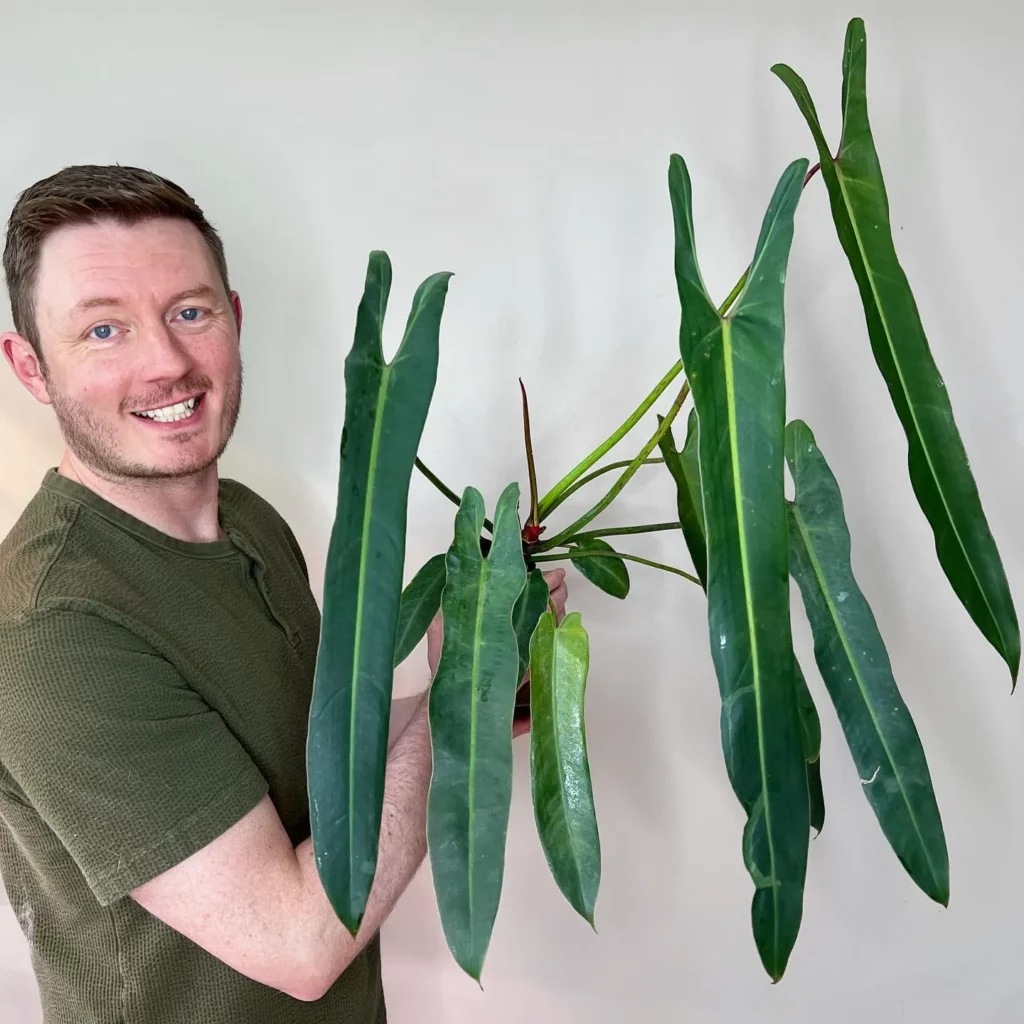
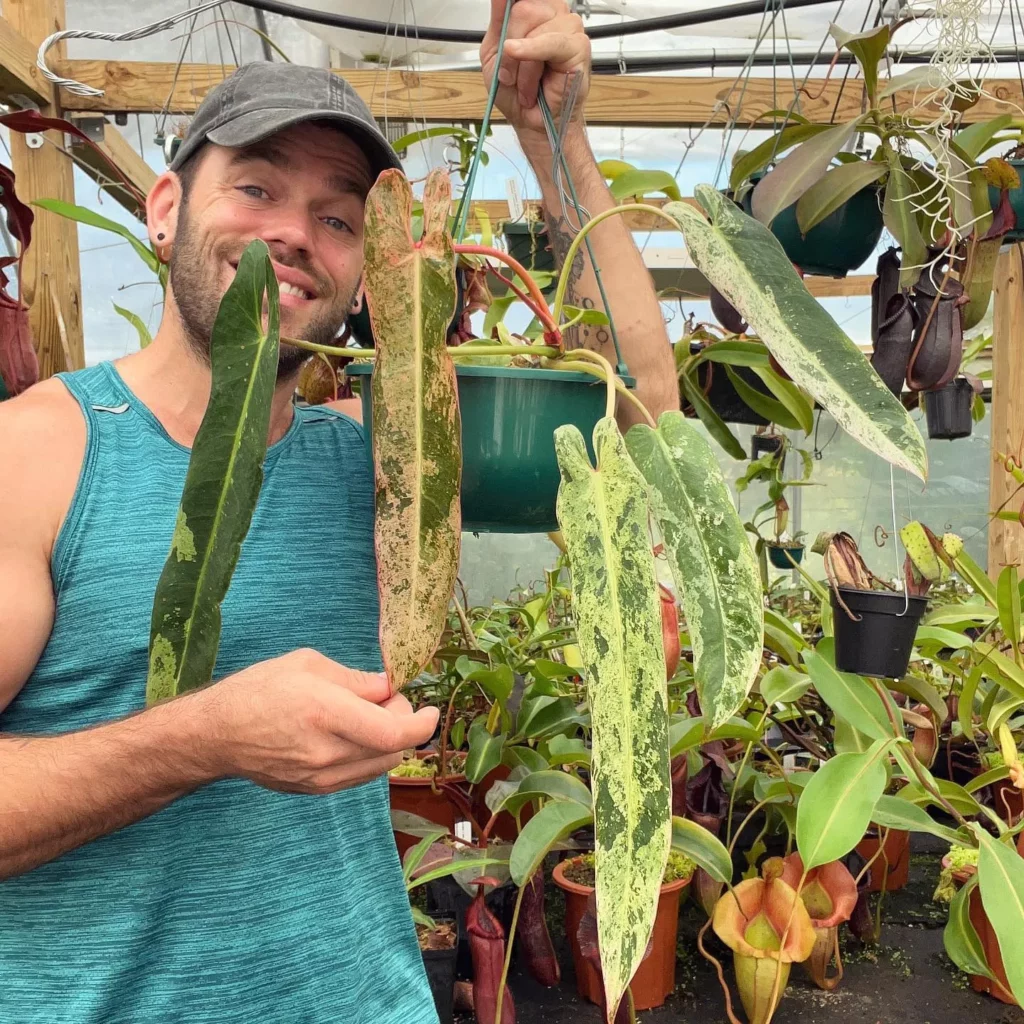
Proper watering is essential for the health and well-being of your Philodendron Spiritus Sancti. This unique plant prefers to be kept moist, but not soggy. To determine when your Spiritus Sancti needs watering, check the top few inches of soil. If it feels dry to the touch, it’s time to water.
It’s important to ensure that excess water drains out from the pot to prevent waterlogging and the risk of root rot. Make sure your Philodendron Spiritus Sancti is potted in well-draining soil and has a drainage hole in its container.
The frequency of watering will depend on the humidity levels in your home. In drier environments, you may need to water more frequently, while in more humid conditions, watering less frequently may be sufficient. Always check the soil moisture before watering to avoid over or under watering your plant.
Fertilizing Philodendron Spiritus Sancti


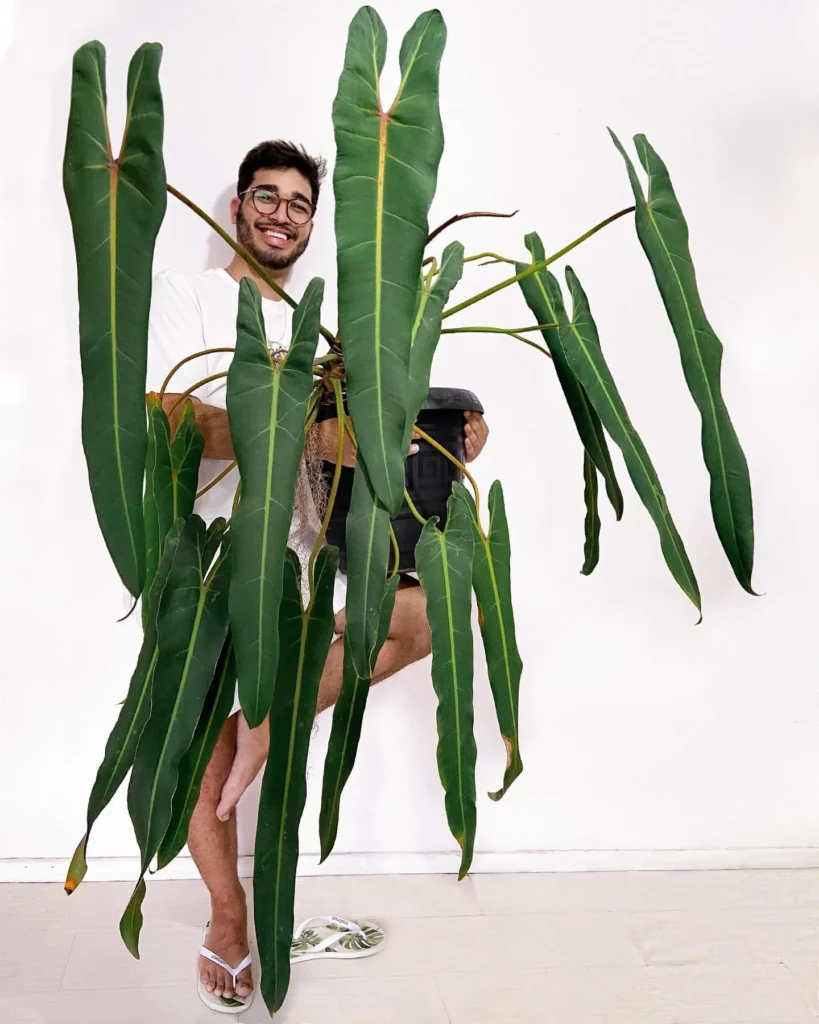
The Philodendron Spiritus Sancti is a low-maintenance plant when it comes to fertilizing. It has a unique ability to obtain nutrients from fallen leaves in its natural habitat. However, to support blooming once the plant is mature, you can occasionally provide a very light liquid fertilizer.
It is important to avoid over-fertilizing your Philodendron Spiritus Sancti as this can cause damage to the plant. A balanced fertilizer with equal parts of nitrogen, phosphorus, and potassium is recommended. This will ensure that your plant receives the essential nutrients it needs to thrive.
Fertilizing should be done during the growing season and avoided during the dormant period. It’s best to follow the instructions on the fertilizer packaging to determine the appropriate amount to use for your Philodendron Spiritus Sancti.
Potting Philodendron Spiritus Sancti

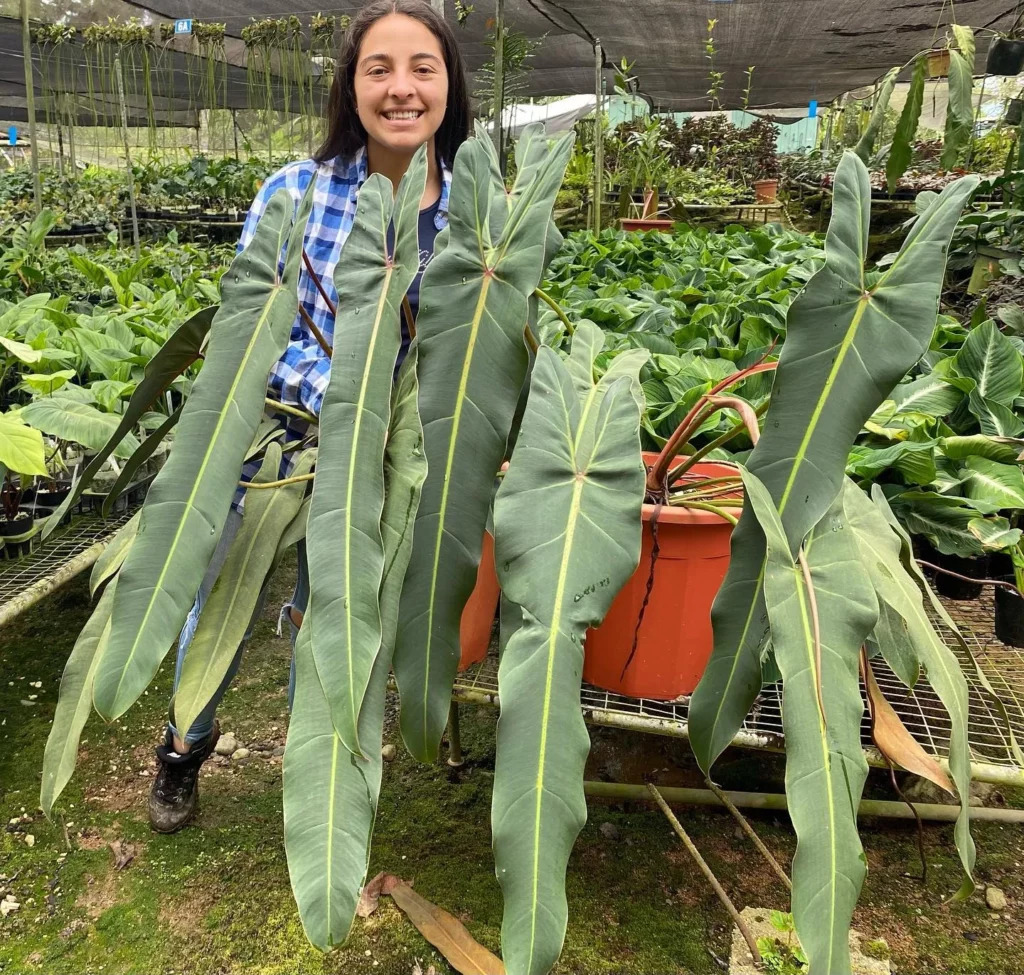

When it comes to potting your Philodendron Spiritus Sancti, proper care and consideration are key. The right potting technique will ensure the health and vitality of this unique plant.
First and foremost, it is crucial to use a well-draining soil mix for your Spiritus Sancti. This plant thrives in airy soil or orchid mix that allows for proper drainage. Avoid using heavy and compact soil as it can lead to waterlogging and root rot.
Additionally, opt for pots with drainage holes to facilitate the escape of excess water. This will prevent water from accumulating in the pot and causing harm to your plant. Proper drainage is essential for maintaining the optimal moisture levels for your Philodendron Spiritus Sancti.
Repotting your Spiritus Sancti should be done when it outgrows its current pot, typically once a year. Remember to choose a new pot that is several inches larger to accommodate new growth. A larger pot will provide the necessary space for the roots to expand and develop.
Before repotting, gently tap the pot to loosen the roots. This will help prevent any damage to the delicate root system. Take care while handling the plant to ensure its well-being throughout the repotting process.
Caring for your Philodendron Spiritus Sancti involves potting it in well-draining soil, using pots with drainage holes, repotting when necessary, and handling the plant with care to avoid root damage. By following these tips, you can create an ideal environment for your Spiritus Sancti to thrive.
Propagation of Philodendron Spiritus Sancti



Propagating the Philodendron Spiritus Sancti can be a bit challenging as the plant does not root easily from cuttings. However, there is a recommended method for propagation called air layering that works well for this plant.
Air layering involves selecting a healthy stem of the Philodendron Spiritus Sancti that has at least one node. Then, you will wrap the selected portion of the stem in moist sphagnum moss, which helps to encourage root growth. Next, you will secure the moss-wrapped stem with plastic wrap to keep it in place.
After several weeks, roots will start to form within the moss. Once you see a good amount of root growth, you can carefully cut the new growth away from the parent plant and plant it in a pot with well-draining soil.
Growth and Development of Philodendron Spiritus Sancti



The Philodendron Spiritus Sancti, when provided with the right conditions, exhibits relatively fast growth. In its natural habitat, this plant has been observed reaching heights of up to 65 feet. However, when grown indoors, it may be necessary to prune the Spiritus Sancti to manage its size and shape. Pruning not only helps with size control but can also encourage bushier growth, resulting in a fuller and more aesthetically pleasing plant.
As the Spiritus Sancti grows, it is important to repot it annually to prevent it from becoming root-bound. This helps ensure that the plant has enough space for its roots to expand and absorb nutrients properly. When repotting, choose a pot that is several inches larger in diameter to accommodate the plant’s growth.
The mature size of the Philodendron Spiritus Sancti is approximately 65 feet in length and 6 feet in width. However, through regular pruning, you can manage the size of the plant to suit your space and preferences.
Pests and Diseases of Philodendron Spiritus Sancti
The Philodendron Spiritus Sancti, like any other plant, is susceptible to various pests and diseases that can affect its health and overall well-being. It is important to be aware of these potential issues and take the necessary steps to prevent and address them promptly.
Pests
Common pests that can infest the Philodendron Spiritus Sancti include spider mites and mealybugs. Spider mites are tiny arachnids that feed on the plant’s sap and can cause yellowing leaves and webbing. Mealybugs are small, white insects that also feed on the sap and leave a sticky residue on the foliage. These pests can be detrimental if left untreated.
To control these pests, you can start by using a water spray directly on the affected areas of the plant. This can help dislodge the pests and wash away their eggs. Another option is to use organic insecticides specifically designed for spider mites or mealybugs. These products are formulated to target these pests effectively without harming the plant.
Diseases
Root rot is a common disease that can affect the Philodendron Spiritus Sancti if the soil remains consistently waterlogged. Overwatering or using poorly draining soil can lead to the roots becoming waterlogged, leading to root rot. This disease can cause the roots to decay, hinder the plant’s ability to uptake nutrients, and eventually result in wilting and death of the plant.
To prevent root rot, it is crucial to ensure proper watering practices. The Spiritus Sancti prefers to be kept moist but not overly saturated. Always check the soil moisture levels before watering and provide well-draining soil that allows excess water to drain away. Additionally, avoid using saucers or trays under the pot that can collect excess water and lead to waterlogging.
Regular monitoring of the plant’s leaves and roots is essential to detect and address any pest or disease issues early on. Inspect the leaves for any signs of discoloration, webbing, or sticky residue that could indicate pest infestation. Check the roots for any signs of rotting or decay. If you notice any problems, take immediate action to prevent further damage to the plant.
Maintaining a clean and healthy growing environment is vital for the overall well-being of the Philodendron Spiritus Sancti. Cleanliness helps prevent the buildup of dust and debris, which can attract pests and create a favorable environment for disease development. Regularly wipe the leaves with a soft damp cloth to remove dust and keep the plant’s foliage clean.
The Rarity of Philodendron Spiritus Sancti
The Philodendron Spiritus Sancti is a truly remarkable plant that has gained worldwide recognition for its rarity and unique beauty. As an endangered species native to a small region in Brazil, the Spiritus Sancti is incredibly scarce in the wild, with only a few remaining individuals. This scarcity has contributed to its high demand among plant enthusiasts and collectors.
Due to its limited availability, obtaining a genuine Philodendron Spiritus Sancti can be quite challenging. One must exercise caution when purchasing this plant, as there are many sellers offering imitations or unrelated species under the same name. To ensure you are getting an authentic Spiritus Sancti, it is crucial to conduct thorough research and acquire your plant from reputable and trustworthy sources.
The allure of the Philodendron Spiritus Sancti extends beyond its rarity. This prized specimen showcases stunning elongated, sword-like leaves that can reach impressive lengths. Its dark green and glossy foliage adds a touch of elegance to any indoor space. However, it is important to note that while the Spiritus Sancti is a captivating addition to your plant collection, it is toxic to both pets and humans, requiring careful handling and placement.
With its endangered status, the Philodendron Spiritus Sancti has become a highly sought-after plant, commanding a significant price tag. The rarity, combined with its intrinsic beauty, has elevated its value in the market. If you are fortunate enough to own a genuine Spiritus Sancti, it is essential to provide it with the utmost care and attention to ensure its long-term health and well-being.
FAQ
How should I care for my Philodendron Spiritus Sancti?
To care for your Philodendron Spiritus Sancti, you should provide it with bright indirect light, water it when the top few inches of soil feel dry, use a well-draining soil mix for potting, and fertilize it lightly during the growing season with a balanced fertilizer. It is important to propagate through air layering, prune when needed, and protect it from pests and diseases.
What is the appearance of the Philodendron Spiritus Sancti?
The Philodendron Spiritus Sancti has elongated, sword-like leaves that can reach up to 2 feet in length. It can grow up to 65 feet long and has a width of 6 feet. The leaves are dark green and glossy, making it a stunning addition to any indoor space.
What are the light requirements for the Philodendron Spiritus Sancti?
The Philodendron Spiritus Sancti thrives in bright indirect light. It should be placed near a bright window but not in direct sunlight. Finding the right balance of light is crucial for the health and growth of your Spiritus Sancti.
How often should I water my Philodendron Spiritus Sancti?
The Philodendron Spiritus Sancti prefers to be kept moist, but not soggy. It is important to check the top few inches of soil before watering. If the soil feels dry, it is time to water the plant. The frequency of watering will depend on the humidity levels in your home, so always check the soil before watering.
How should I fertilize my Philodendron Spiritus Sancti?
The Philodendron Spiritus Sancti does not require high amounts of fertilizer. A very light liquid fertilizer can be added occasionally to support blooming once the plant is mature. It is important to avoid over-fertilizing, as this can cause damage to the plant. A balanced fertilizer with equal parts of nitrogen, phosphorus, and potassium is recommended. Fertilizing should be done during the growing season and avoided during the dormant period.
What type of soil should I use for potting my Philodendron Spiritus Sancti?
When potting the Philodendron Spiritus Sancti, it is essential to use a well-draining soil mix. The plant prefers airy soil or orchid mix that allows for proper drainage. It is recommended to use pots with drainage holes to prevent waterlogging. Repotting should be done when the plant outgrows its current pot, typically once a year. The new pot should be several inches larger to accommodate new growth.
How can I propagate the Philodendron Spiritus Sancti?
Propagating the Philodendron Spiritus Sancti can be challenging, as it does not root well from cuttings. Air layering is the recommended method for propagation. It involves selecting a healthy stem with at least one node, wrapping it in moist sphagnum moss, and securing it with plastic wrap. After several weeks, roots will form, and the new growth can be cut and planted in well-draining soil. Proceed with caution when air layering, as the plant may decline after being cut.
How can I manage the growth and size of my Philodendron Spiritus Sancti?
The Philodendron Spiritus Sancti can grow relatively quickly under the right conditions. Pruning may be necessary to control its size and shape. Pruning can also encourage bushier growth. The plant should be repotted yearly as it becomes root-bound. The mature size of the Spiritus Sancti is approximately 65 feet long and 6 feet wide, but pruning can help manage the plant’s size.
How can I protect my Philodendron Spiritus Sancti from pests and diseases?
The Philodendron Spiritus Sancti can be susceptible to pests such as spider mites and mealybugs. These pests can be controlled using water sprays or organic insecticides. Preventing root rot by ensuring proper watering and using well-draining soil is also important. Regular monitoring of the plant’s leaves and roots can help detect and address any pest or disease issues early on. Maintaining a clean and healthy growing environment is crucial for the overall well-being of the plant.
Why is the Philodendron Spiritus Sancti considered rare and coveted?
The Philodendron Spiritus Sancti is considered a rare and coveted plant due to its unique appearance and limited availability. It is an endangered species, with very few left in the wild. Its rarity and unique appearance contribute to its high demand and expensive price tag. It is important to do thorough research and purchase from trustworthy sources to ensure you are getting the authentic Philodendron Spiritus Sancti.




